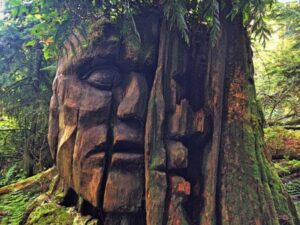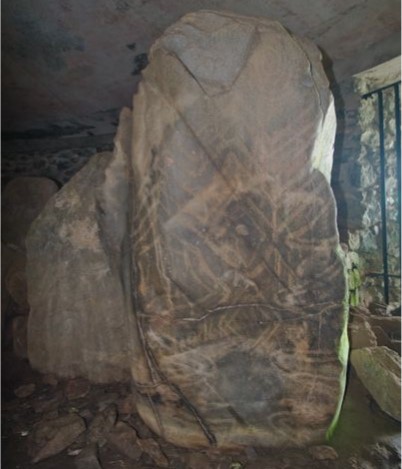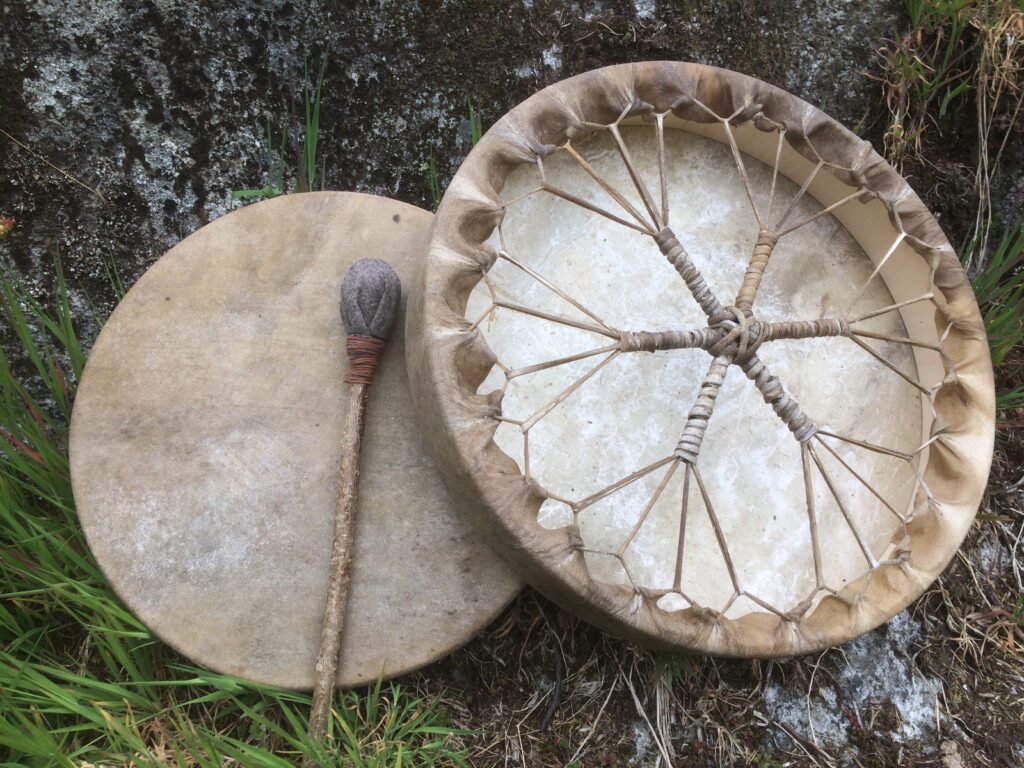

The main intention of this article is to try to dispel some of the fears and misconceptions that seem to exist around shamanism.
Origins of practices we now call ‘shamanism’ cannot be traced to source, but its methods have been around for thousands of years. Cross-cultural principles emerged in parallel, meaning separate cultures developed ideas so similar they became near universal. Perhaps our ancestors retained shamanic ways because of their effectiveness. Today, these ways can make significant positive differences in people´s lives. But our modern culture is highly demanding in expecting scientifically generated support, so individual experiences related to practices such as shamanism are likely to be rejected. Those who are not attuned to the work and those who are unable or unwilling to properly engage in it will probably reject its efficacy.
Some people regard shamanism as a religion and it could perhaps squeeze into such a definition, but there is little value in debating that. So long as shamanic principles are upheld, it makes little difference whether one calls it a religion or otherwise. Some may have social or personal benefits in labelling, but it should not affect the work, providing attitudes do not slide into dogma.
These days, shamanism is generally regarded as weird, spooky, dangerous, or worse. Such views probably come from distorted pictures presented from within our highly materialistic and commercialised culture, or maybe by seeing sensationalised representations of shamans looking outrageous or scary. The fact is most shamanic practitioners are fairly regular looking people, with unremarkable kinds of behaviours. You would seldom be able to pick one out from a crowd. Probably everybody who engages kindly and respectfully with nature, animals, people or themselves is, like it or not, doing shamanism on some level.

Shamanism is inextricably connected with Nature and one principle is animism. Animism considers all that exists is alive or everything has a soul. Practicing such a soul-centred approach means one honours and cares for Nature in very personal ways. To understand a river has a soul means one is far less likely to pollute it and far more likely to love it for its own sake. This also applies to all Nature’s other gifts.
“Our toddlers speak of plants and animals as if they were people, extending to them self and intention and compassion—until we teach them not to.” – Robin Wall Kimmerer, Braiding Sweetgrass

Shamans understand there is more than one reality and the terms ordinary reality (OR) and non-ordinary reality (NOR) are commonly used by modern western shamanic practitioners. OR is the familiar reality where we live, work and play. NOR is a realm we are not so familiar with but, although spirits dwell there, we do have access to it.
Shamans visit non-ordinary reality to contact spirit guides who they work with. This demonstrates the principle that we work in partnership with spirits. The practitioner will connect and work with wise, loving, compassionate spirit helpers. Often she will have alliances with a number of spirits and will be persistently interested in developing strong working relationships with the
“The most beautiful thing we can experience is the mysterious. It is the source of all true art and all science. He to whom this emotion is a stranger, who can no longer pause to wonder and stand rapt in awe, is as good as dead: his eyes are closed.”
Albert Einstein
Shamanism is not acceptable by modern western standards as it seems to challenge current scientific beliefs. But I believe science and spirituality could work together and humanity would benefit from tolerance and respect between the two. A look at some examples illustrates the perceived mismatch and suggests a more holistic approach. Having a science background myself, as well being a shamanic practitioner and teacher, I hope my words are considered valid whatever the readers’ viewpoint.

Science tends to consider sickness as having only physical causes and so suggests it must be treated only by physical means. Shamanism adopts the principle that sickness has a spiritual basis. If only one or the other of these assertions is considered true, it becomes difficult to see the whole. Shamanism may struggle with acute problems, while science may struggle with chronic problems. If a client approached me with a broken leg, I would not shake a rattle over it, but would recommend they visit a hospital. If someone reported long term depression, however, shamanic methods can help. Many people suffering from conditions such as depression have reported great benefits after shamanic work.
Perhaps science, or at least many scientists, would reject existence of the soul because of lack of data or evidence. The shaman, however, understands a person does have a soul and need not confirm this by taking measurements. A great deal within the Universe is not understood and remains unmeasured, this does not negate its validity. Some things are not meant to be measured, described by data or examined under controlled conditions. Some things are just there to be experienced.
An enquirer once told me of his journey to the Amazon and his experiences there with some shamans. “They were the real thing!”, he exclaimed. Instead of entering lengthy discussion , I politely suggested I did not know what he meant by “the real thing”.

The word shaman originates from a Tungus language once widely spoken in Siberia. The root of the word is saman, a verb that has a number of possible translations, something like ‘to know’. Strictly speaking, as the word is borrowed from the Tungus language, so called ‘true shamans’ really ought to be Siberian. But lineage in practices now termed shamanic are valid no matter who you are or where you come from and it is almost certain some of your ancestors would have practiced what we now call shamanism.
If you are concerned about entitlement, the best thing is to relax and accept you have a birthright to practice shamanism, whatever your culture. No person owns a spiritual practice, it comes from source. “The real thing” is not restricted to any specific culture or setting, wherever and whenever that may be claimed.
One unique human activity is to seek understanding around the meaning of life. Myths were once used to understand the world and were instrumental to how people related to others, themselves and Nature. Myths today are largely regarded as nonsensical tales no longer valid to explain our cosmology. What many fail to realise is that modernity itself is a myth. Modern science, logic and reasoning are thought to explain everything and have formed our cultural features. While the modern myth has brought along many wonderful advantages, we have not escaped many human difficulties. The soul has largely been stripped out of our world, to be replaced by data, evidence, scientific knowledge and machine driven measurement.
There are huge gaps in our understanding and it is not good enough to be told science will fill all those gaps, or that we can buy our way out of problems. It is the ego that is addicted to analysing, to reasoning and defining. Such addiction can be reinforced by science and modernity. What cannot be seen, touched or measured falls outside the range of our culture’s acceptance of ‘truth’, but there are forces whose composition is beyond measure and whose nature is not known to science. We can only use words like ‘spirit’ and ‘shamanism’ to represent such forces and we can only feel, not measure, the soul arriving back into our culture, our world.
Many culturally specific practices can be found in shamanism, as well as common aspects practiced across cultures. Typically in the west, serious shamanic practitioners work within a number of shamanic principles. While there are variations in individual style, practitioners tend to deploy similar methods. All authentic practitioners work in partnership with spirit allies.

The vast majority of shamanic practitioners, myself included, never utilise drugs of any kind in their work. In some cultures shamans will employ psychoactive substances such as ayahuasca, but this is relatively rare. Use of the shaman’s drum is the generally accepted way of connecting with spirit allies.
While much of the work is centred around healing, just as much is about developing an authentic way of life, which is very personal. Shamanism is ideal for reintroducing care of the soul, which is lacking within our materialistic world that falls short of its promises of fulfillment.